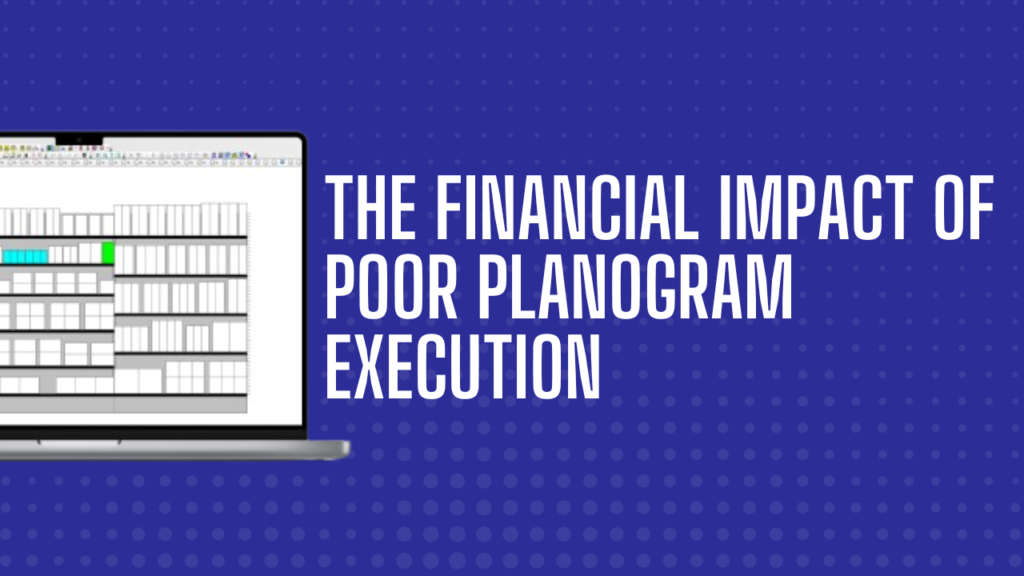The Financial Impact of Poor Planogram Execution

In the retail world, effective planogram execution is more than just a strategy for organizing products on shelves; it’s a critical factor that can significantly impact a retailer’s financial performance. A well-executed planogram ensures that products are displayed optimally to maximize sales, streamline inventory management, and enhance the customer shopping experience. Conversely, poor planogram services can lead to substantial financial repercussions. Here’s a look at how ineffective planogram execution can affect a retailer’s bottom line.
1. Lost Sales and Revenue
One of the most immediate financial impacts of poor planogram execution is lost sales revenue. When products are not placed according to a well-thought-out planogram, several issues can arise:
- Stockouts: If high-demand products are not placed in easily accessible locations, or if inventory levels are not aligned with the planogram, customers may face stockouts. This can result in missed sales opportunities and customer dissatisfaction.
- Overstocking: Conversely, poor planogram execution can lead to overstocking of low-demand items. Excess inventory ties up capital and can lead to markdowns and discounting to clear space, ultimately eroding profit margins.
2. Increased Operational Costs
Inefficient planogram execution can also drive up operational costs in several ways:
- Labor Costs: Frequent reworking of product placements due to poor planogram execution means higher labor costs. Employees may spend excessive time reorganizing products, which could otherwise be spent on more productive tasks.
- Gestion des stocks: Ineffective planogram execution often leads to poor inventory management. Retailers might experience higher holding costs due to overstocking, or face expedited shipping costs to replenish stockouts.
3. Diminished Customer Experience
The customer experience is directly linked to planogram effectiveness. Poor planogram execution can negatively impact the shopping experience, leading to:
- Frustration and Reduced Satisfaction: If products are not placed logically or are difficult to find, customers may become frustrated. This can lead to a diminished shopping experience and potentially drive customers to competitors.
- Brand Perception: Consistently poor execution can tarnish a retailer’s brand image. Customers may perceive the retailer as disorganized or unreliable, affecting their likelihood to return.

4. Missed Cross-Selling Opportunities
Effective planograms not only ensure that products are displayed correctly but also facilitate cross-selling opportunities. Poor planogram execution can result in:
- Lost Cross-Selling Potential: Products that complement each other may not be placed near each other, missing opportunities to increase average transaction value through cross-selling.
- Reduced Impulse Purchases: Poor product placement can hinder impulse buys, which are often driven by strategic product placements and promotional displays.
5. Impact on Promotional Effectiveness
Retail promotions rely heavily on proper planogram execution. When planograms are not executed correctly, the effectiveness of promotional strategies can be compromised:
- Ineffective Promotions: Promotions that are not well-integrated into the planogram may not attract customer attention, leading to lower promotional sales and decreased return on investment.
- Wasted Marketing Spend: Marketing and promotional budgets may be wasted if the planogram does not support the promotional strategies effectively, resulting in lower than expected sales boosts.
6. Long-Term Financial Impact
Over time, the cumulative effects of poor planogram execution can have a significant impact on a retailer’s overall financial health:
- Decreased Profit Margins: With ongoing issues related to inventory management, lost sales, and increased operational costs, profit margins can erode significantly.
- Reduced Market Share: Persistent poor execution can lead to a loss of competitive edge, causing a decline in market share and potentially impacting long-term profitability.
Conclusion
The financial ramifications of poor planogram execution are far-reaching, affecting everything from immediate sales and operational costs to long-term profitability and market position. Retailers must prioritize effective planogram strategies and ensure that their execution aligns with their broader business objectives to avoid these pitfalls. Investing in robust planogram solutions and regularly reviewing and optimizing planogram performance can help mitigate these financial risks and drive better financial outcomes. For specialized planogram services, contact Analyticsmart.
Have A Question?
Learn how Analyticsmart can elevate your retail performance with data-driven insights and customized solutions.
Contact Sales
Have a question or comment? Submit your message through our contact form and a member of our team will get back to you within 24 hours.
Marketing Head | Analyticsmart
Unlock Your Retail Potential With Us



